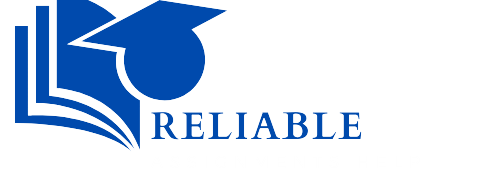Final Project Instructions For Effective Leadership (BBUS4833) 45%
Learning Outcomes
In the final project, you will:
| • | Synthesize the learning from the different elements of this leadership course. |
| • | Identify what you discovered about leadership as you participated in this course. |
| • | Clearly articulate what effective leadership means to you. |
Introduction
In this final project, you have a chance to demonstrate your understanding of the key concepts covered in the course. The requirements of the report are described in greater detail below. This is your chance to pull all your reflections, experiences, questions, inquiries, understanding, and goals together. You will find your journal entries, assignments, and online entries invaluable in undertaking this project.
The purpose of the Effective Leadership course was to provide you with an opportunity to develop a repertoire of leadership skills for diverse
organizational/community contexts. In the course, you have been asked to challenge yourself to learn about leadership through activities, readings, and dialogue; observations of the various ways, places, and times that people step up to undertake a leadership challenge; explorations into how change can be initiated and facilitated; and discovery of the role of storytelling, inquiry, context, and systems thinking in effective leadership.
In this final project, you are asked to integrate your learning from all four modules. You are encouraged to tell us, through your report, what you have come to understand about effective leadership, where it occurs, and what supports it.
To support your discovery through this course, you had a variety of resources to draw on: online library books, readings from a number of authors, graphics, websites, conversations with the members of your cohort, observations and discussions with people in other communities, and your own experiences.
Content
In your report, you are expected to demonstrate your understanding of the key concepts of this course:
| • | Context |
| • | Adaptability |
| • | Emotional intelligence |
| • | Challenging the status quo |
| • | Inquiry |
| • | Imagination |
| • | Vision |
| • | Values-based action |
| • | Making a difference |
| • | Systems thinking |
Assignment Length and Format
Your report should be 12 pages double-spaced. It should have an introduction, clearly identified subsections, a summary, and concluding remarks. Support your paper with relevant documentation. Choose the supporting documentation carefully to ensure that it supports key ideas in your paper. For example, if you identify that a key leadership challenge for your organization is a need to consult more broadly with
| diverse groups of people in your community, you may provide supporting documents such as news clippings, outreach bulletins, or meeting minutes. All references to other authors’ work, or quotations, should be appropriately cited in the body of your paper and referenced at the end of the paper. In addition to the requirements outlined below, your report should meet the guidelines for satisfactory completion of all modules. These guidelines are provided in the Course Guide. IMPORTANT NOTE We encourage you to be creative in your format. You might choose to make your subheadings more personal than academic, or to add humour. For example, to introduce each section, one learner used phrases from a song; another used quotations from popular movies to introduce each section. You may add poems, quotations from your colleagues at work, family members, community leaders, teachers, or coaches. Freely use metaphors, graphics, and personal anecdotes, providing examples to illustrate and support your reflections and statements. Link theory and practice by integrating formal learning with real-world experience. Reference the readings, websites, and materials that were used in the course or that you have found on your own. Refer to your learning from the assignments throughout the course. Make your project come alive by bringing yourself to every page. You are encouraged to support your report with the use of whatever mediums best express what you wish to say—words on paper, voice recordings, visuals, etc. Write in the first person, using “I.” Share your thoughts and feelings. Reflectively analyze your own experiences, those experiences you observed, and your readings. This paper is more than a final assignment for the course. It is a synthesis of your learning and a tool for your continued growth. Instructions Draw on what you have learned about the three competency areas—inquiring leadership, contextual leadership, and imaginative leadership—and how they relate to each other. Analyze a leadership experience, either |
- where you were the leader, or
- where you observed another leader.
Below, you will find probing statements/questions to guide your analysis.
In your analysis, address the following:
| • | The leadership opportunity: | |||
| o | Describe the leadership opportunity and explain its context (internal and external). | |||
| o | Describe the risks involved and identify the challenges that emerged in this leadership opportunity. | |||
| o | Discuss the outcomes and describe the rationale for the successes that were evident. | |||
| • | Systems thinking and the role of inquiry: | |||
| o | In what areas was the system examined or challenged? | |||
| o | Evaluate the fierce conversations that were engaged in this leadership opportunity. | |||
| o | What policies and procedures (formal or informal) needed to be changed as a result of these fierce conversations? | |||
| • | Visioning and Values-based Action: | |||
| o | Explain the process used in developing a shared vision. | |||
| o | Describe your reflections on what impact the vision will have now and in the future. | |||
| o | Describe the strategies used to create the valuesbased action. Indicate how the values were linked to the action. | |||
| • | Summary of this leadership opportunity: | |||
| o | Examine the impact. What positive difference was made and how did the system change? | |||
| • | Conclusion: | |||
| o | Compare the integrated leadership framework explored in this course with the leadership | |||
approaches of Goleman, Kouzes & Posner, and Bolman & Deal.
Completion Guidelines
When writing your report, consider the following:
| • | Is my report written clearly, and does it use proper grammar? | ||||
| • | Did I support my statements with examples? | ||||
| • | Did I include my thoughts, my reflections, and my learning? | ||||
| • | Did I demonstrate full understanding and integration of key course concepts linking theory with practical application? | ||||
| • | Did I demonstrate clarity of thought and proper use of language to communicate ideas and concepts? | ||||
| • | Did I reference readings, websites, materials, and actions to support comments or observations? | ||||
| • | Did I incorporate creativity and my personality within the report? | ||||
| Reference: Ensure that you make the appropriate UPDATE APA references (SEE THE | |||||
| ATTACHED DOCUMENT) to the readings as you link the theory to your practice. | |||||

